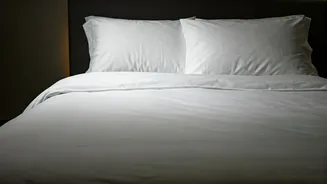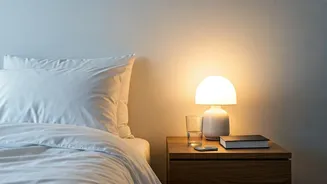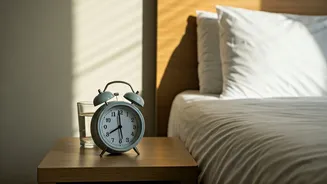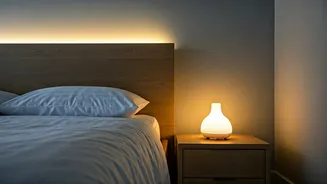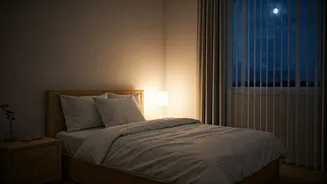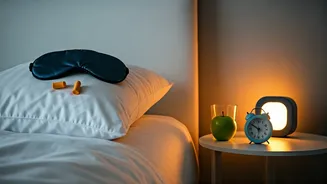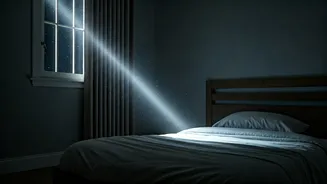Establish Consistent Sleep
One of the cornerstones of good sleep is a regular sleep schedule. This entails going to bed and waking up at the same time every day, even on weekends,
to regulate your body's natural sleep-wake cycle, also known as your circadian rhythm. Consistency strengthens your body's internal clock, making it easier to fall asleep when you want to. Try to stick to a routine of going to bed and getting up at the same time, give or take 30 minutes, to train your body to sleep. When your body gets used to a regular pattern, it will start to prepare for sleep at the scheduled time, helping you to fall asleep more quickly and sleep more soundly. Avoid drastic changes to your sleep schedule, as this can disrupt your body's natural rhythm. By committing to a consistent sleep schedule, you will be well on your way to better sleep.
Optimize Your Bedroom
Your bedroom environment plays a huge role in the quality of your sleep. Ensure your bedroom is conducive to sleep by making it dark, quiet, and cool. Use blackout curtains to block out light, which can interfere with your sleep cycle. Invest in earplugs or a white noise machine to muffle any disruptive sounds. Keep the temperature in your bedroom cool, as a cooler environment tends to promote sleep. Aim for a temperature around 60-67 degrees Fahrenheit (15-19 degrees Celsius). Ensure your bed and pillows are comfortable and supportive to prevent physical discomfort that could keep you awake. Consider using a comfortable mattress, a soft blanket, and supportive pillows to ensure proper posture while sleeping. A well-designed bedroom acts as a signal to your body that it's time to sleep and contributes significantly to getting a restful night.
Limit Screen Time
Screens from smartphones, tablets, and computers emit blue light, which can trick your brain into thinking it's daytime, disrupting the production of melatonin, a hormone that regulates sleep. Avoid screen time for at least an hour before bed. Consider reading a physical book, listening to calming music, or doing a relaxing activity to wind down. If you must use screens, activate the blue light filter feature on your devices to reduce the amount of blue light exposure. This will help minimize the impact on your sleep. When planning your bedtime routine, remember to put away your phone, tablet, and computer to help you sleep. By practicing this habit, your brain will have an easier time transitioning into sleep mode. This practice is crucial for promoting better sleep.
Practice Relaxation Techniques
Implementing relaxation techniques before bed can help calm your mind and body, making it easier to fall asleep. Experiment with different techniques to find what works best for you. Some popular methods include deep breathing exercises, progressive muscle relaxation, meditation, and yoga. Deep breathing can help reduce stress and anxiety by slowing your heart rate and promoting a sense of calm. Progressive muscle relaxation involves tensing and releasing different muscle groups in your body to alleviate physical tension. Meditation can quiet your mind and reduce racing thoughts, allowing you to relax. Yoga combines physical postures, breathing exercises, and meditation, enhancing sleep quality. The key is to find the techniques that resonate with you, helping you to transition from wakefulness to sleep with more ease.
